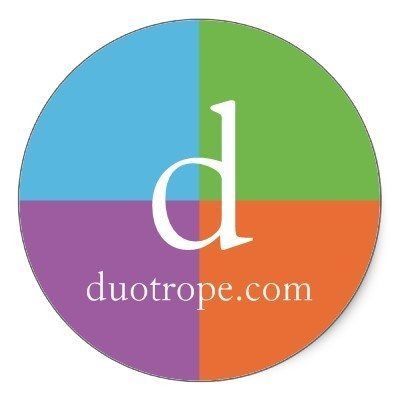Duotrope for Better Writing Management
is a tool ($50.00/year) I use to track journal submissions. While I found the interface difficult to understand as a beginning user, I really like this like this software. Besides acting as a submission tracker and archive for all submissions, Duotrope shines when it comes to the statistics they use. How long will I expect to wait before I hear a response from x journal? There’s a statistic for that. What percentages of submissions are accepted? There’s a stat for that.
Duotrope also tracks which users submitted to other journals. For example, I submitted a piece to AGNI. Duotrope tells me that other users submitted work to The Normal School. I can then click on the Normal School link and read more about this really cool journal. I can also track submission deadlines; call for entry deadlines and read about more than 4900 magazines and journals referenced in their databases, a small number of which hail from Canada and the United Kingdom.
They also have a cool series of interviews with editors. That feature has helped me to quickly determine if my more experimental memoir style will at least be of interest to them. I can then check out the journal from my local library. (Journals are eligible for interlibrary loan. Ask your local librarian how to do that for you.) I read an issue or two, then decide two things: Whether or not the essay I have in mind might fit with that journal’s particular editorial vision and if I want to become a subscriber.
I’m not very good with keeping track of things in spreadsheets. And paying money for something makes me more inclined to track/submit/whatever the software expects me to do. Unless I have my black ninja habit master with me, my lovely Ms. H., I struggle. So Duotrope fulfills an important professional goal of submission tracking and submission sanity (I could see myself submitting the same piece to the same journal, the one that will reject my work twice!).
Duotrope has a seven-day trial period. For me the 50/year is worth it.
One of my writing mentors said tracking submissions is really important. Tracking successes, and almost as important, tracking the soft nos, when an editor writes a personalized rejection note, and tracking which journals have received which draft of an essay or story, becomes an act that suggests I’m a pro. While I can’t be responsible for the outcome of my efforts, and trust me, the success rate stinks - less than one percent for unknown writers (i.e. those who don’t get commissioned to write a piece), I am responsible for showing up.
We all know we will die. From the second our particular sperm and egg say hello, how do you do, we’re dying. Writing isn’t much different. From the moment I send out an essay or story, there is a greater than 99% chance I will be rejected.
But this is the work of writing. And while writing goals (daily pages/daily word counts/submissions per month) are a foundation of a writing career, reading journals, submitting, reading the works of authors we admire, and more importantly, reading works we find really, really hard (in English, Joyce or Morrison; in translation, Tolstoy or de Beavoir) are equally important. Duotrope might be an important part of your process.
Good luck!
 Duotrope
Duotrope